Christian McBride may be the hardest-working man in Jazz. The virtuoso bassist has played on nearly 300 records and has earned three Grammys for his own albums, which number more than a dozen heading into 2014. McBride learned his craft from his father (Lee Smith) and great uncle (Howard Cooper), refined it further at Juilliard, and went on to play with a who’s who of jazz luminaries, including Chick Correa, Sting, Pat Metheny, Diana Krall, David Sanborn, Joe Lovano, Joe Henderson, Freddie Hubbard, Milt Jackson, Benny Green and Ray Brown. All by age 40! McBride and his wife, jazz singer Melissa Walker, live in Montclair, where they lead the Jazz House Kids program and play starring roles at the annual Montclair Jazz Festival. Next March, he will host Jazz Meets Sports at NJPAC, an evening of music and conversation with sports superstars and jazz connoisseurs Bernie Williams and Kareem Abdul-Jabbar. Editor at Large Tracey Smith, who knows a thing or two about jazz herself, talked to McBride about the next step in his already over-the-top career.
EDGE: You’ve made a really impressive transition from in-demand sideman to bandleader. How does that journey work?
CM: As a sideman, when someone hires me for a gig, my first job is to serve the vision of that bandleader. It’s almost like being an actor—if someone calls you in for a role in a movie, you have to thrive within that role. Musicians often say they don’t want to have any limitations or work where there are guidelines. Finding your own place within these guidelines? For me that’s fun! It means I can do this but I can’t do that—or vice versa. Hmmm, let me see what I can find in here. I think that’s how I’m able to still retain my own identity while serving the bandleader.
EDGE: Talk about your work with Chick Correa and Sting.
CM: I’ve had a working relationship with Chick Correa since 1996. And every group I’ve played with him in, it’s quite surreal—he allows me to do whatever I want, do whatever I hear. He wants me to read the music he gives me, but once I get off the paper, I can do my thing! He’s really cool. He trusts me. I’m appreciative and honored by that. Sting, on the other hand, now this is how I think most bandleaders are…or at least should be. When I first started working with Sting, he was only just a little familiar with my playing. He’d heard a couple of the songs I had played on, but mostly it came from reputation. A few of the guys in the band told him if he was looking for a new bass player, then he should look at Christian McBride. When I started rehearsing with him, I realized I had to earn his trust, because we hadn’t played together before. To gain a bandleader’s trust, you must do exactly what they ask you to do—don’t step out of bounds, gain their confidence, and then when they start trusting you more and more, with each performance you get to establish more of your own identity, while serving the bandleader’s vision.
EDGE: Isn’t that still constrictive?
CM: Why would I go on Sting’s gig and start playing all my Ray Brown licks? That isn’t what’s called for. It’s about being selfless and serving the vision. After a few months of playing in his band I was able to throw in—every once in a blue moon—some of my own stuff. Sting would look over and give me a wink, or he would look over and give me a frown (laughs) depending on what lick it was.
EDGE: Now you are primarily a bandleader. Did that take some settling in?

Photo courtesy of Christian McBride
CM: Yes. It’s taken quite some time to feel comfortable being a bandleader all of the time. Over the last, I would say, five or six years, the majority of my time has been dedicated to all of my own projects, my band—Inside Straight—my trio, my big band. Before that, I kind of just dibbled and dabbled at it; most of my time was spent playing with other people, being the sideman. It wasn’t a very good balance of being able to do both. I think most people viewed my being a bandleader as something I did every once in a while, when I wasn’t busy with Pat Metheny or Chick Correa. But now the tide is starting to turn.
EDGE: Both roles demand a certain degree of, as you mentioned, selflessness.
CM: I think that would be the main thread. As a sideman, you have to realize that you are there to serve the vision of the bandleader. Too many musicians are always looking for someone to tell them how great they are, even when it’s not their gig. They somehow want to have a lot of “say so” even though they’re not the bandleader. But that’s not what it is…the greatest musicians I’ve ever been around are very selfless musicians, and as a bandleader you have to be sensitive to your sidemen or collaborators. It’s a democratic process. In order for them to help you carry out your vision, they have to be on your side. You can’t be selfish, you can’t be a mean-spirited slave-driver. That only works for a hot minute, it doesn’t work for the long run (laughs). The band will turn on you at some point.
EDGE: Who do you consider your important influences?
CM: My primary influence when it comes to composition has always been Wayne Shorter. I cannot write like him. Nobody can write like him. In terms of what he writes, and how he writes, he’s always been my number-one hero. But then, there are musicians like Duke Ellington, Oliver Nelson, Chick Correa—they have always been some of my biggest inspirations.
EDGE: When I listen to you, I hear Ray Brown with Jaco Pastorius bass lines. Who are your musical mentors?
CM: Well, those two people you just named are my top two influences of all-time. If I could somehow tell someone what my playing is based on, it would be those two guys, Ray Brown and Jaco Pastorius. Again, particularly with the electric bass, I’m not as well-balanced playing both the acoustic and electric bass, at least publically, as I once did with my old band, The Christian M Band. I would say by the end of next year or early 2015, I want to start doing some work with my fourth group, called A Christian McBride Situation, which is a pretty even balance of acoustic and electric instruments. Ray Brown, Jaco, Ron Carter, Bootsy Collins, they are all my top heroes.
EDGE: 2013 has been a busy year for you.
CM: It has. I’ve had two CD releases already—People Music, with my group Inside Straight was released in May, and my new trio’s CD, called Out Here, was released in August. I also performed at the 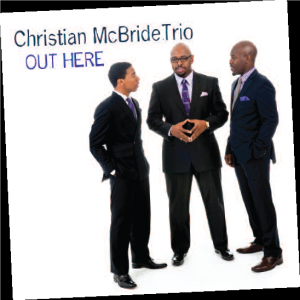 University of Maryland a piece I was commissioned to write for the Portland Art Society, The Movement Revisited. It’s a four-part suite dedicated to four major figures of the Civil Rights Movement: Rosa Parks, Malcolm X, Muhammad Ali and Dr. Martin Luther King, Jr., performed by my Big Band and Washington DC’s Heritage Signature Chorale, with spoken word selections by special guests, including civil rights activist and artist Harry Belafonte.
University of Maryland a piece I was commissioned to write for the Portland Art Society, The Movement Revisited. It’s a four-part suite dedicated to four major figures of the Civil Rights Movement: Rosa Parks, Malcolm X, Muhammad Ali and Dr. Martin Luther King, Jr., performed by my Big Band and Washington DC’s Heritage Signature Chorale, with spoken word selections by special guests, including civil rights activist and artist Harry Belafonte.
EDGE: The digital age has certainly changed the recording industry landscape. How has the Internet changed things for you?
CM: It’s been like the Wild Wild West. It’s definitely a new frontier for everyone in the music industry. I think we’re still trying to plant our feet to try to get some stability. It seems like it is affecting everyone across the board, not just jazz musicians. One could argue that it is leveling the playing field, but I think that is only half-true, because what is happening now is that people are crafty and they are finding ways to get around paying for music. That’s not good on any level, because artists have to make a living. I don’t know how we can somehow change the thinking of Americans. I really feel it’s only an American problem, because people have no problem paying for music anywhere else in the world—even people who don’t have a lot of means. They realize the importance of art, but it seems like here it’s, “Why should we pay for music? All these guys are millionaires anyway!” Someone always has this knee-jerk reaction that all musicians are millionaires, or we don’t need the money, or what we do is not really an occupation, it’s a hobby.
EDGE: Who’s on your playlist when you are listening for pleasure?
CM: I really don’t do as much recreational listening anymore. I’m working on so many different projects, that most of my listening is dedicated to that. But James Brown usually dominates any of my musical devices. And there is always plenty of Cannonball Adderley, Ray Brown with Oscar Peterson, plenty of Quincy Jones—especially during his big band stuff. Those are always going to be in my player.

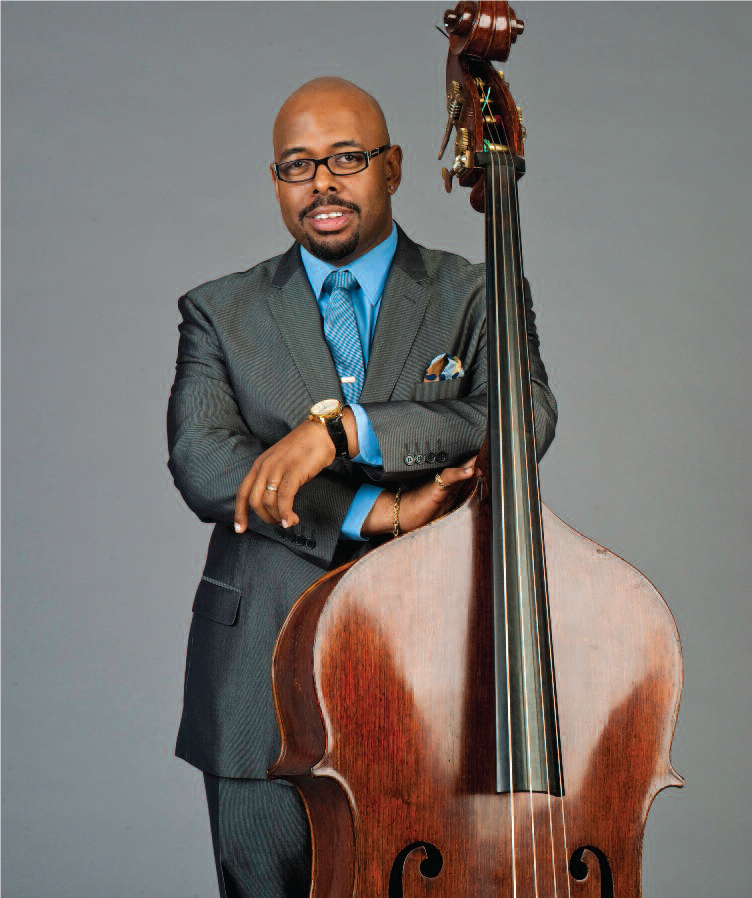
 Painkiller Overdoses Spiking Among Women A new report from the Centers for Disease Control offers some eye-opening facts on the abuse of painkillers among women. Since 1999, the number of women who have died from a painkiller overdose has increased by a factor of four. “Mothers, wives, sisters, and daughters are dying at rates that we have never seen before,” says Dr. Thomas Frieden, Director of the CDC. Among the more alarming aspects of the report are: 1) On average, 18 women die
Painkiller Overdoses Spiking Among Women A new report from the Centers for Disease Control offers some eye-opening facts on the abuse of painkillers among women. Since 1999, the number of women who have died from a painkiller overdose has increased by a factor of four. “Mothers, wives, sisters, and daughters are dying at rates that we have never seen before,” says Dr. Thomas Frieden, Director of the CDC. Among the more alarming aspects of the report are: 1) On average, 18 women die  from painkiller overdoses in the U.S. every day; 2) More women die from prescription drug overdoses than from car accidents; 3) Some 50,000 women between the ages of 25 and 34 will be taken to U.S. emergency rooms as a result of painkiller overdoses this year. In its report, the CDC recommended that healthcare providers exercise greater caution when prescribing prescription medications—and suggested that states and the federal government could turn this trend around by doing a better job educating women on the dangers of prescription painkillers. “We are seeing an increase in the numbers of women and young people presenting in the emergency room with prescription pain and anxiety medications—many of whom have legitimate prescriptions for a physical or mental health disorder, and others who are accessing prescription meds from others or on the street,” Lisa Dressner confirms. Dressner is Program Director of TRMC’s Psychiatric Emergency Services. “Too often, alternatives to these highly addictive medications are not explored, and primary care or pain management doctors may not fully assess someone’s potential or history of substance abuse.” There is an urgent need, she adds, for more education to consumers around the potential for addiction to commonly prescribed pain meds, and medications for problems related to anxiety or sleep, so that risk for abuse of these medications, and increased depression, withdrawal and suicidality is minimized.
from painkiller overdoses in the U.S. every day; 2) More women die from prescription drug overdoses than from car accidents; 3) Some 50,000 women between the ages of 25 and 34 will be taken to U.S. emergency rooms as a result of painkiller overdoses this year. In its report, the CDC recommended that healthcare providers exercise greater caution when prescribing prescription medications—and suggested that states and the federal government could turn this trend around by doing a better job educating women on the dangers of prescription painkillers. “We are seeing an increase in the numbers of women and young people presenting in the emergency room with prescription pain and anxiety medications—many of whom have legitimate prescriptions for a physical or mental health disorder, and others who are accessing prescription meds from others or on the street,” Lisa Dressner confirms. Dressner is Program Director of TRMC’s Psychiatric Emergency Services. “Too often, alternatives to these highly addictive medications are not explored, and primary care or pain management doctors may not fully assess someone’s potential or history of substance abuse.” There is an urgent need, she adds, for more education to consumers around the potential for addiction to commonly prescribed pain meds, and medications for problems related to anxiety or sleep, so that risk for abuse of these medications, and increased depression, withdrawal and suicidality is minimized. other developed countries. Only a third of American girls have been fully vaccinated; in other countries (including Rwanda!) the rate is closer to 80 percent. HPV causes 19,000 cases of cancer among women in the U.S. each year. It also accounts for 8,000 cases in men, a statistic brought to light by actor Michael Douglas, whose throat cancer was identified as being HPV-related. “The study showed that less than four years later the prevalence of the vaccine strains among young women aged 14–19 years had fallen by 56%,” points out Dr. William Farrer, Associate Program Director and Associate Professor of Medicine of the Seton Hall University School of Health and Medical Sciences at TRMC. “This was despite the fact that in 2010, only 32% of 13–17 year-olds had received the full 3-dose series of vaccine. Rates of HPV infection in older women had not fallen, probably reflecting the fact that they were not the target group for the vaccine.The researchers also reported that ‘Sexual behavior among females aged 14–19 years overall was similar in the two periods.’ This should reassure opponents of the HPV vaccine who expressed concern that somehow use of the vaccine would encourage promiscuity.”
other developed countries. Only a third of American girls have been fully vaccinated; in other countries (including Rwanda!) the rate is closer to 80 percent. HPV causes 19,000 cases of cancer among women in the U.S. each year. It also accounts for 8,000 cases in men, a statistic brought to light by actor Michael Douglas, whose throat cancer was identified as being HPV-related. “The study showed that less than four years later the prevalence of the vaccine strains among young women aged 14–19 years had fallen by 56%,” points out Dr. William Farrer, Associate Program Director and Associate Professor of Medicine of the Seton Hall University School of Health and Medical Sciences at TRMC. “This was despite the fact that in 2010, only 32% of 13–17 year-olds had received the full 3-dose series of vaccine. Rates of HPV infection in older women had not fallen, probably reflecting the fact that they were not the target group for the vaccine.The researchers also reported that ‘Sexual behavior among females aged 14–19 years overall was similar in the two periods.’ This should reassure opponents of the HPV vaccine who expressed concern that somehow use of the vaccine would encourage promiscuity.” Air Pollution Linked to Sleep Disorders in Children While we watch the Arab Spring unfold in Egypt in dramatic fashion, some dramatic health news has come out of that country that is relevant right here in New Jersey. In July, University of Cairo researchers announced the results of sleep study on school-age children, which shows a link between air pollution and sleep disorders. The 276 children in the study exhibited significant disorders of initiating and maintaining sleep, and excessive
Air Pollution Linked to Sleep Disorders in Children While we watch the Arab Spring unfold in Egypt in dramatic fashion, some dramatic health news has come out of that country that is relevant right here in New Jersey. In July, University of Cairo researchers announced the results of sleep study on school-age children, which shows a link between air pollution and sleep disorders. The 276 children in the study exhibited significant disorders of initiating and maintaining sleep, and excessive  somnolence when exposed to PM10 (particulate matter smaller than 10 micrometers) in the air. PM10 particles can settle in the lungs and cause health problems. Larger particles are typically filtered by the nose and throat. In treating the pediatric population at the Trinitas Comprehensive Sleep Disorders Center, Vipin Garg, MD, Director of the Center notes that, “Small particles or large particles of pollution can irritate the airways of children, especially those who have large adenoids. Children who have to breathe through their mouths because of enlarged adenoids bypass the normal filtering process of the nose and that can have an irritant effect on both the upper and lower airways. This may result in a significant sleep disturbance especially if sleep is already compromised. Also lower airway irritation can lead to asthma-like symptoms.”
somnolence when exposed to PM10 (particulate matter smaller than 10 micrometers) in the air. PM10 particles can settle in the lungs and cause health problems. Larger particles are typically filtered by the nose and throat. In treating the pediatric population at the Trinitas Comprehensive Sleep Disorders Center, Vipin Garg, MD, Director of the Center notes that, “Small particles or large particles of pollution can irritate the airways of children, especially those who have large adenoids. Children who have to breathe through their mouths because of enlarged adenoids bypass the normal filtering process of the nose and that can have an irritant effect on both the upper and lower airways. This may result in a significant sleep disturbance especially if sleep is already compromised. Also lower airway irritation can lead to asthma-like symptoms.” Walking the Walk While the medical profession has long promoted the benefits of daily exercise, a new study out of the Middle East pinpoints how short, brisk walks taken after meals are an effective way to diminish the risk of developing Type 2 diabetes. The results, published in the latest issue of Diabetes Care, focus on how post-meal strolls reduce blood sugar levels. “Blood sugar levels are the highest after meals and as we age our pancreas is less effective in releasing insulin, a hormone that helps lower blood sugar,”
Walking the Walk While the medical profession has long promoted the benefits of daily exercise, a new study out of the Middle East pinpoints how short, brisk walks taken after meals are an effective way to diminish the risk of developing Type 2 diabetes. The results, published in the latest issue of Diabetes Care, focus on how post-meal strolls reduce blood sugar levels. “Blood sugar levels are the highest after meals and as we age our pancreas is less effective in releasing insulin, a hormone that helps lower blood sugar,”  explains Dr. Mahmoud Ali Zirie, who ran the study out of Qatar. “This leads to higher blood sugar that can increase the risk of diabetes. A short walk two hours after meals can help normalize blood sugar levels. To achieve maximum health benefits walking should be moderate intensity. In other words, it needs to be faster than a stroll and brisk enough to raise your heart rate.” Those who are new to this type of exercise should begin slowly, stay hydrated and avoid excessive heat, and build toward a regular and rigorous regimen. Kathleen McCarthy, RN, a Certified Diabetes Educator at Trinitas, offers these tips: “Whether you have diabetes or you are trying to keep diabetes at arm’s length, you will benefit from a regular exercise regimen of 30 minutes a day, five days a week, or more. Short brisk walks, two hours after a meal, improve post-prandial (after meal) glucose readings. Walking also improves circulation, heart and lung function, and releases endorphins which help control of stress and pain. As you build muscle mass, your metabolism will increase which then gives you more energy and will lead to weight loss over time. The benefits of aerobic exercise last up to 12 hours after exercise. Exercise is a key ingredient to improve or maintain optimal health.”
explains Dr. Mahmoud Ali Zirie, who ran the study out of Qatar. “This leads to higher blood sugar that can increase the risk of diabetes. A short walk two hours after meals can help normalize blood sugar levels. To achieve maximum health benefits walking should be moderate intensity. In other words, it needs to be faster than a stroll and brisk enough to raise your heart rate.” Those who are new to this type of exercise should begin slowly, stay hydrated and avoid excessive heat, and build toward a regular and rigorous regimen. Kathleen McCarthy, RN, a Certified Diabetes Educator at Trinitas, offers these tips: “Whether you have diabetes or you are trying to keep diabetes at arm’s length, you will benefit from a regular exercise regimen of 30 minutes a day, five days a week, or more. Short brisk walks, two hours after a meal, improve post-prandial (after meal) glucose readings. Walking also improves circulation, heart and lung function, and releases endorphins which help control of stress and pain. As you build muscle mass, your metabolism will increase which then gives you more energy and will lead to weight loss over time. The benefits of aerobic exercise last up to 12 hours after exercise. Exercise is a key ingredient to improve or maintain optimal health.” Mild Depression and Alzheimer’s A recent aging study conducted by researchers in the U.S. and Asia has found that the onset of Alzheimer’s Disease appears to be accelerated by depression. The study suggested that individuals with depressive symptoms progressed from mild cognitive impairment to full-blown Alzheimer’s at a much faster rate than those who did not exhibit signs of depression. Indeed, depression doubled the risk of developing Alzheimer’s in this particular study. These findings have opened
Mild Depression and Alzheimer’s A recent aging study conducted by researchers in the U.S. and Asia has found that the onset of Alzheimer’s Disease appears to be accelerated by depression. The study suggested that individuals with depressive symptoms progressed from mild cognitive impairment to full-blown Alzheimer’s at a much faster rate than those who did not exhibit signs of depression. Indeed, depression doubled the risk of developing Alzheimer’s in this particular study. These findings have opened  up a number of debates about what actually triggers the cognitive decline. However, it strongly suggests that decisive steps to intervene or mediate depression among people at risk for Alzheimer’s need to be taken. “Occasionally, depression in the elderly, even in the absence of dementia, has been known to result in impairment of cognitive functions,” adds Dr. Anwar Y. Ghali, Chairman of Psychiatry at Trinitas. “Especially the memory, in a condition referred to as ‘depressive pseudo dementia.’ Hence, one would expect that this might occur at a higher rate with patients already diagnosed with Alzheimer’s. Therefore, physicians should always evaluate Alzheimer’s patients for the possibility of a co-morbid depression. With adequate treatment of depression, patients should be relieved of suffering and also experience reduced possibility of suicide—a complication of depression that occurs at a higher rate with the elderly, especially in males and particularly for those suffering from an additional illness.”
up a number of debates about what actually triggers the cognitive decline. However, it strongly suggests that decisive steps to intervene or mediate depression among people at risk for Alzheimer’s need to be taken. “Occasionally, depression in the elderly, even in the absence of dementia, has been known to result in impairment of cognitive functions,” adds Dr. Anwar Y. Ghali, Chairman of Psychiatry at Trinitas. “Especially the memory, in a condition referred to as ‘depressive pseudo dementia.’ Hence, one would expect that this might occur at a higher rate with patients already diagnosed with Alzheimer’s. Therefore, physicians should always evaluate Alzheimer’s patients for the possibility of a co-morbid depression. With adequate treatment of depression, patients should be relieved of suffering and also experience reduced possibility of suicide—a complication of depression that occurs at a higher rate with the elderly, especially in males and particularly for those suffering from an additional illness.” Landmark Diabetes Study Completed The recently completed Look AHEAD study by the University of Pittsburgh has brought into question the value of lifestyle intervention programs for overweight and obese Type 2 diabetes patients. The study covered more than 5,000 people at 16 clinical centers across the country, over more than a decade. One group in the study followed an aggressive program of weight management and increased physical activity. The other was only provided with health information and support related to diabetes. In terms of strokes and heart attacks, there was no significant difference between the two groups. The biggest difference between the groups was in the area of weight loss. The information and support group lost relatively little weight, while the intervention group lost 8.7 percent of their body weight and had excellent success keeping it off. A 5 percent weight loss is considered clinically significant, particularly in the controlling of cholesterol, blood pressure and blood sugar. “While the findings from the Look AHEAD study did not support that
Landmark Diabetes Study Completed The recently completed Look AHEAD study by the University of Pittsburgh has brought into question the value of lifestyle intervention programs for overweight and obese Type 2 diabetes patients. The study covered more than 5,000 people at 16 clinical centers across the country, over more than a decade. One group in the study followed an aggressive program of weight management and increased physical activity. The other was only provided with health information and support related to diabetes. In terms of strokes and heart attacks, there was no significant difference between the two groups. The biggest difference between the groups was in the area of weight loss. The information and support group lost relatively little weight, while the intervention group lost 8.7 percent of their body weight and had excellent success keeping it off. A 5 percent weight loss is considered clinically significant, particularly in the controlling of cholesterol, blood pressure and blood sugar. “While the findings from the Look AHEAD study did not support that  engagement in a weight-loss intervention was effective for reducing the onset of cardiovascular disease incidence or mortality, this does not mean that overweight adults with diabetes should not lose weight and become more physically active,” says John Jakicic of the Department of Health and Physical Activity in Pitt’s School of Education. Dr. Ari Eckman, Chief of Endocrinology and Metabolism at Trinitas, adds that there is an overwhelming amount of evidence from this study to date that has shown that weight loss and physical activity were associated with numerous other health benefits: “While weight loss alone was not shown to significantly decrease this incidence in the recent Look AHEAD study, there is strong support from numerous studies supporting the benefits of weight loss and physical activity for many other health benefits. Further studies are recommended to determine the full effect weight loss has on cardiovascular disease prevention. It is still strongly recommended for people with diabetes who are overweight or obese to lose weight and maintain a healthy lifestyle.”
engagement in a weight-loss intervention was effective for reducing the onset of cardiovascular disease incidence or mortality, this does not mean that overweight adults with diabetes should not lose weight and become more physically active,” says John Jakicic of the Department of Health and Physical Activity in Pitt’s School of Education. Dr. Ari Eckman, Chief of Endocrinology and Metabolism at Trinitas, adds that there is an overwhelming amount of evidence from this study to date that has shown that weight loss and physical activity were associated with numerous other health benefits: “While weight loss alone was not shown to significantly decrease this incidence in the recent Look AHEAD study, there is strong support from numerous studies supporting the benefits of weight loss and physical activity for many other health benefits. Further studies are recommended to determine the full effect weight loss has on cardiovascular disease prevention. It is still strongly recommended for people with diabetes who are overweight or obese to lose weight and maintain a healthy lifestyle.”

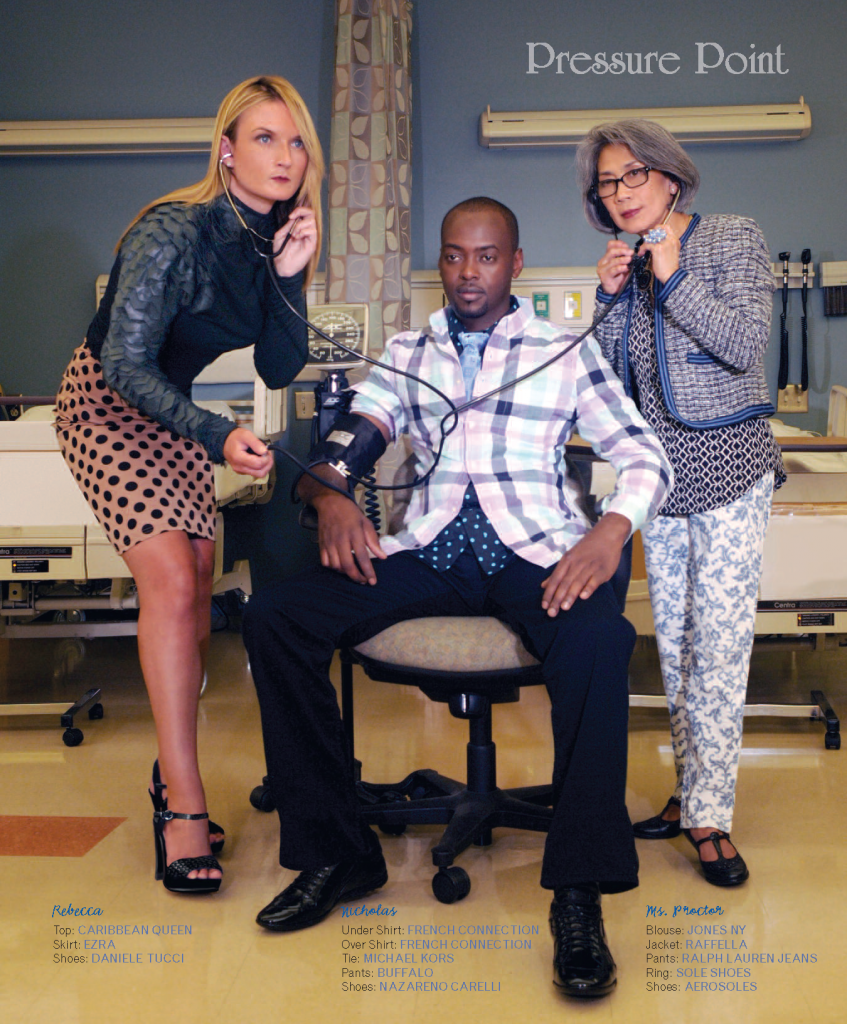
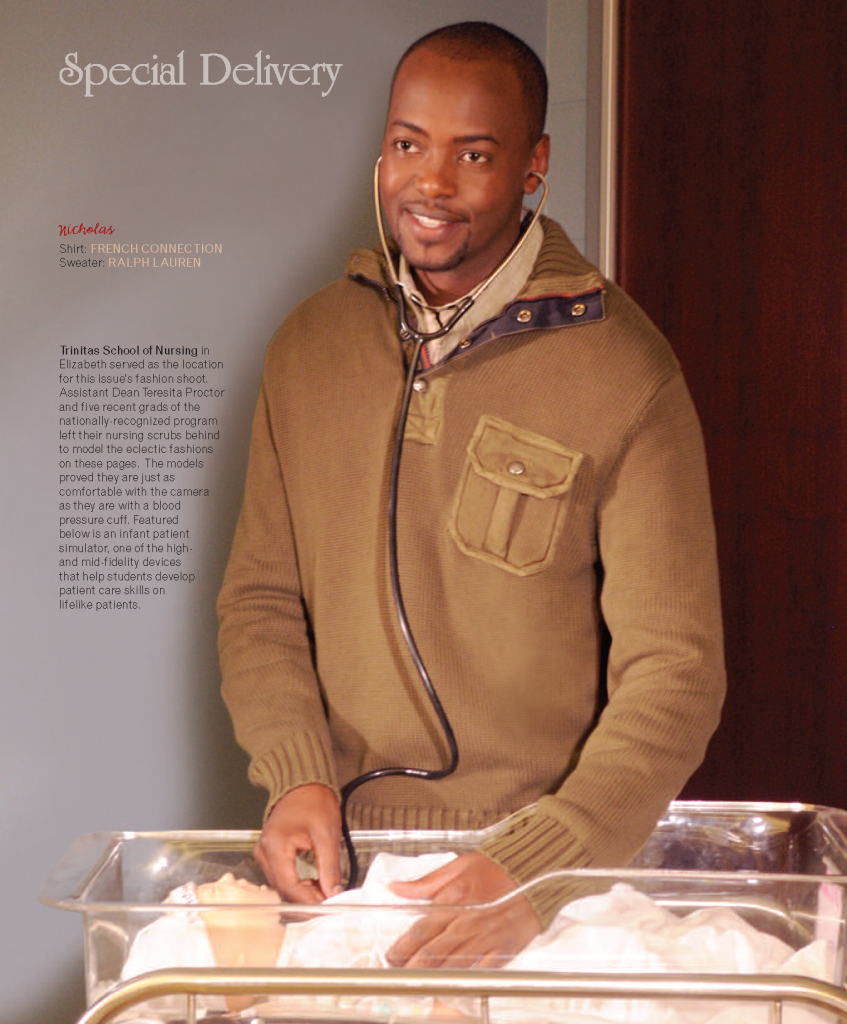



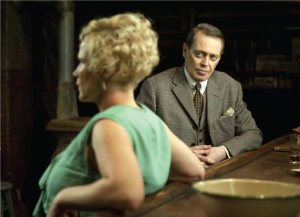
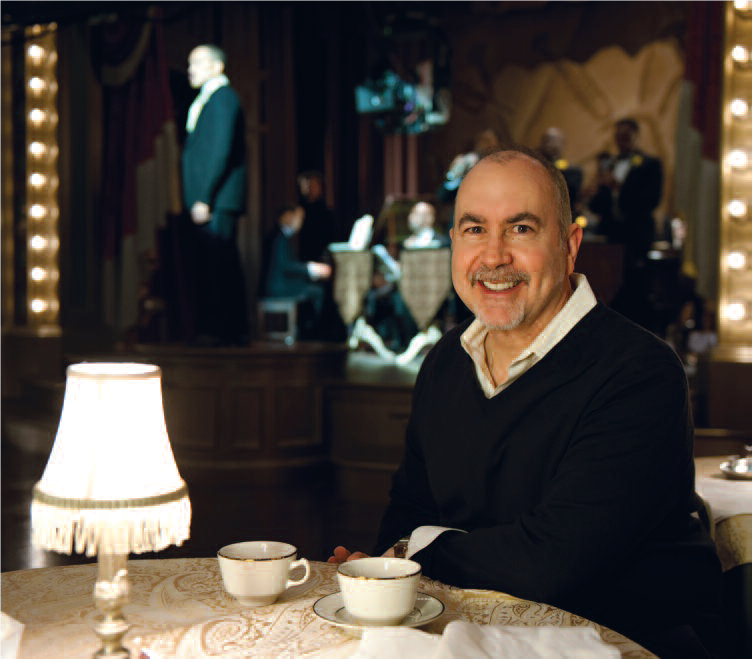



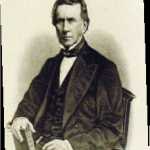


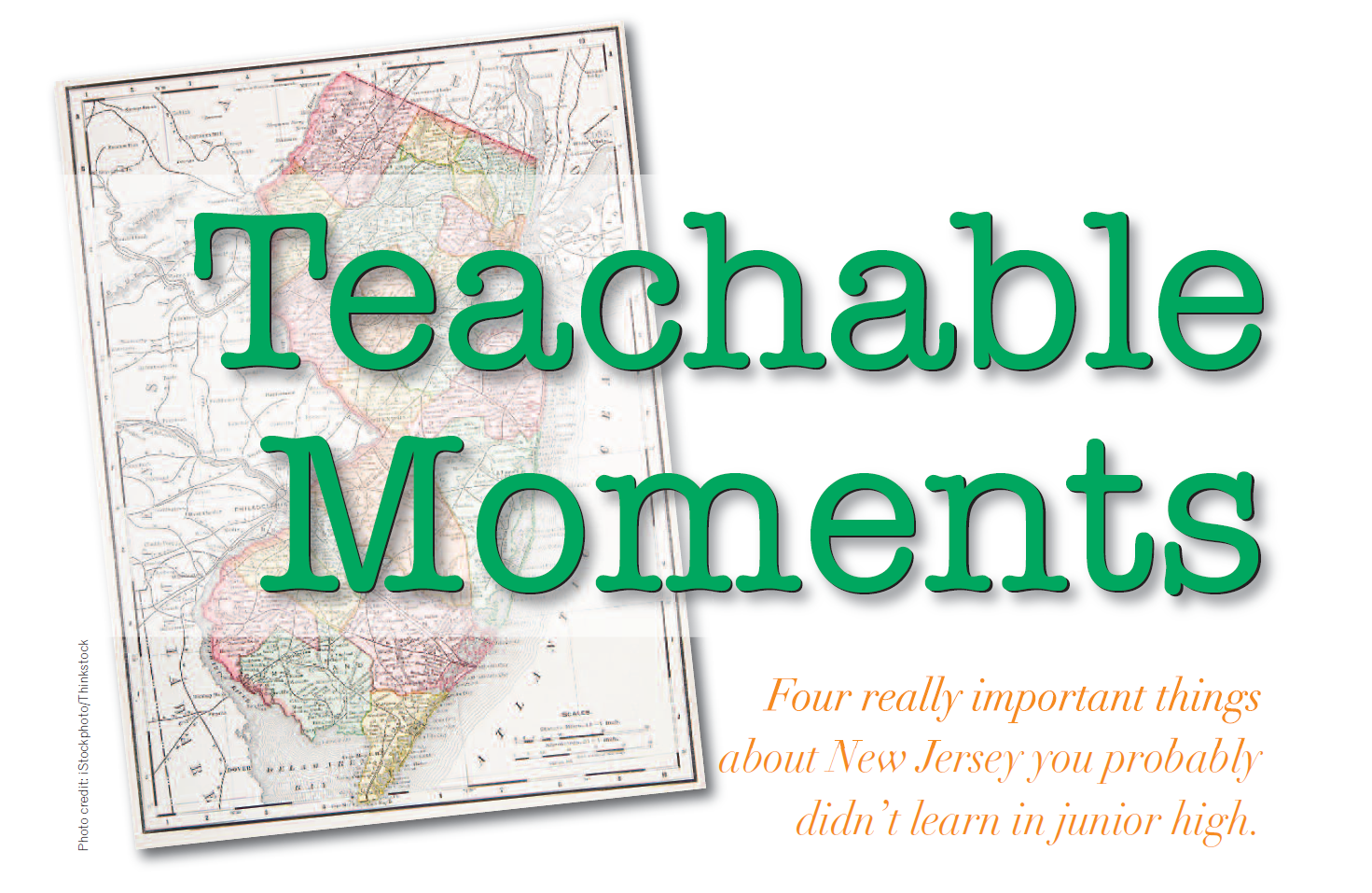
 Here come the choppers. Swirling into Mogadishu. Smoke, dust and sand fill the screen. Swarms of half-naked kids race past adobe buildings that explode into flames and deadly debris. Somalia never looked more hellish. The American Rangers never looked more battle-ready. It’s Blackhawk Down—based, of course, on actual events and directed by Ridley Scott, who is mighty pleased with his blockbuster film. Dramatically a winner, financially a dreamboat that, reportedly, earned its investors “ten bucks on the dime.” And filmed On Location. Switch to Lebanon’s land-mined desert. Leonardo DiCaprio, hands aloft in surrender, must outfox both the ill-advised CIA as well as the local terrorists.
Here come the choppers. Swirling into Mogadishu. Smoke, dust and sand fill the screen. Swarms of half-naked kids race past adobe buildings that explode into flames and deadly debris. Somalia never looked more hellish. The American Rangers never looked more battle-ready. It’s Blackhawk Down—based, of course, on actual events and directed by Ridley Scott, who is mighty pleased with his blockbuster film. Dramatically a winner, financially a dreamboat that, reportedly, earned its investors “ten bucks on the dime.” And filmed On Location. Switch to Lebanon’s land-mined desert. Leonardo DiCaprio, hands aloft in surrender, must outfox both the ill-advised CIA as well as the local terrorists.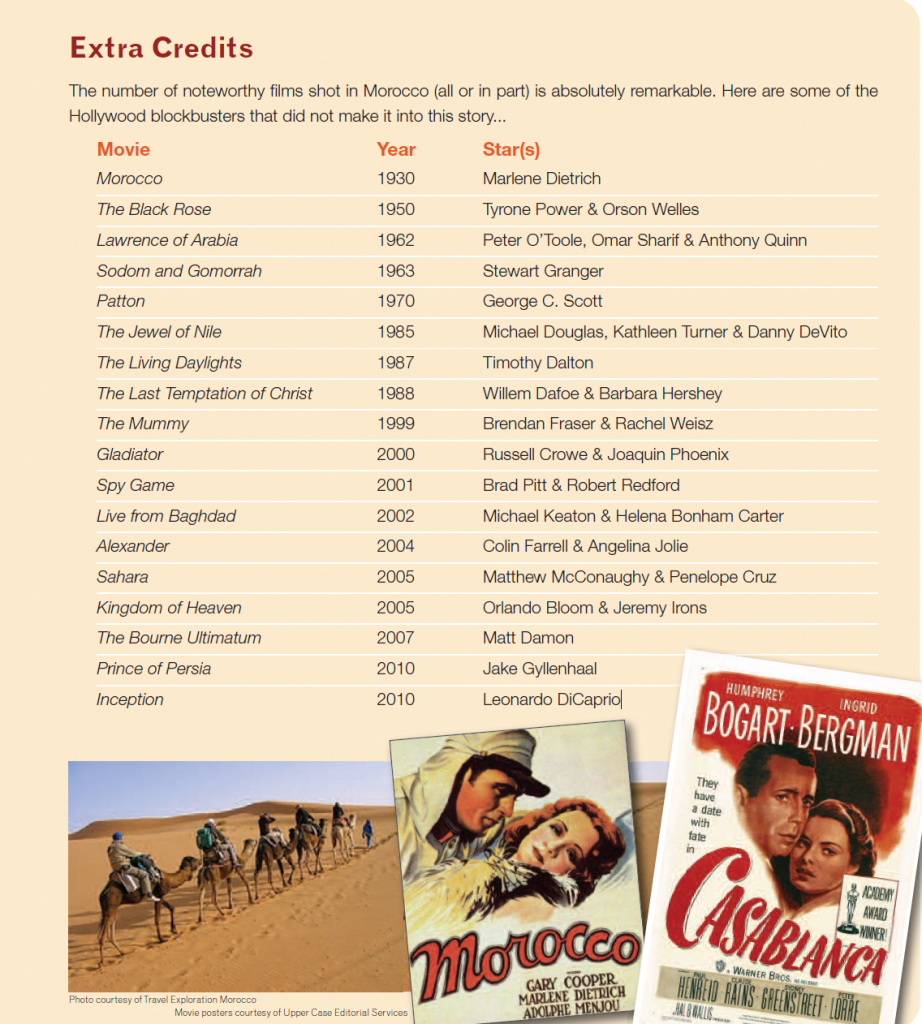



 Turso’s menu reflects what’s grown by Dreyer and his farm crew. The menu descriptions, while referring to the origins of ingredients such as Barnegat scallops and “local” oysters, all but ignored this extraordinary plus. For instance, Liberty Hall beet salad, with its richly colored baby carrots, nibs of honeyed walnuts and sparks of sharp Valley Shepherd cheese, was a rousing harbinger of autumn on this latesummer night. Yet nowhere is it explained that Liberty Hall is both the name of one of Kean’s campuses and a history museum, originally the elegant home of New Jersey’s first governor. (You’d think an education would be part of the dining package.) We had to ask about almost everything, and waits between questions and answers often were long. On the other hand, Turso’s focused, uncomplicated food doesn’t need a promotional boost. Slice into the smoked swordfish, smartly partnered with shavings of crunchy fennel and perky pea tendrils, and you’ll quickly be distracted from service flaws by flavor rhythms of the rich fish as it intersects with a smack of anise from the fennel and the engaging rawness of the shoots.
Turso’s menu reflects what’s grown by Dreyer and his farm crew. The menu descriptions, while referring to the origins of ingredients such as Barnegat scallops and “local” oysters, all but ignored this extraordinary plus. For instance, Liberty Hall beet salad, with its richly colored baby carrots, nibs of honeyed walnuts and sparks of sharp Valley Shepherd cheese, was a rousing harbinger of autumn on this latesummer night. Yet nowhere is it explained that Liberty Hall is both the name of one of Kean’s campuses and a history museum, originally the elegant home of New Jersey’s first governor. (You’d think an education would be part of the dining package.) We had to ask about almost everything, and waits between questions and answers often were long. On the other hand, Turso’s focused, uncomplicated food doesn’t need a promotional boost. Slice into the smoked swordfish, smartly partnered with shavings of crunchy fennel and perky pea tendrils, and you’ll quickly be distracted from service flaws by flavor rhythms of the rich fish as it intersects with a smack of anise from the fennel and the engaging rawness of the shoots.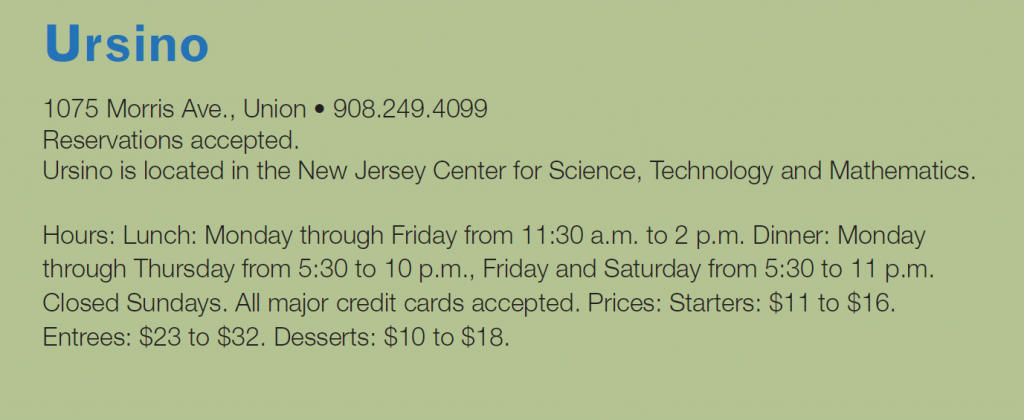

 1776—The first state constitution is drafted and passed in a span of one week to prevent the colony from descending into anarchy after George Washington’s army is routed in New York by the British. It gave unmarried women and African-American men the vote, so long as they owned property, and gave all adults “who are worth fifty pounds proclamation money” the right to vote. William Livingston—a vital leader during the American Revolution—is New Jersey’s hastily elected governor.
1776—The first state constitution is drafted and passed in a span of one week to prevent the colony from descending into anarchy after George Washington’s army is routed in New York by the British. It gave unmarried women and African-American men the vote, so long as they owned property, and gave all adults “who are worth fifty pounds proclamation money” the right to vote. William Livingston—a vital leader during the American Revolution—is New Jersey’s hastily elected governor.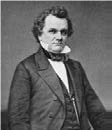 1860—New Jerseyans cast more votes for Stephen Douglas than Abraham Lincoln in the presidential election. Former Governor Rodman Price urges New Jerseyans to join the Confederacy.
1860—New Jerseyans cast more votes for Stephen Douglas than Abraham Lincoln in the presidential election. Former Governor Rodman Price urges New Jerseyans to join the Confederacy.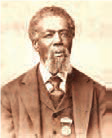
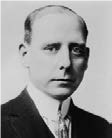 1920—Frank Hague, now Jersey City mayor, passes an ordinance that requires anyone making a public speech in his town to first get clearance from the Police Department, which he controls. Without public opposition, Hague serves as mayor for 30 years (1917– 1947).
1920—Frank Hague, now Jersey City mayor, passes an ordinance that requires anyone making a public speech in his town to first get clearance from the Police Department, which he controls. Without public opposition, Hague serves as mayor for 30 years (1917– 1947).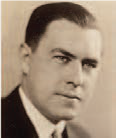 1954—Former governor Harold Hoffman admits in a letter opened after his death that he had embezzled more than $250,000 and was also being blackmailed for $150,000.
1954—Former governor Harold Hoffman admits in a letter opened after his death that he had embezzled more than $250,000 and was also being blackmailed for $150,000.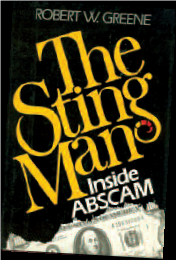 1982—The Senate Committee on Ethics recommends that Senator Harrison Williams be expelled because of his “ethically repugnant” conduct in the ABSCAM sting—an FBI operation aimed at ferreting out corruption in congress. He later becomes the first Senator in 80 years to go to jail.
1982—The Senate Committee on Ethics recommends that Senator Harrison Williams be expelled because of his “ethically repugnant” conduct in the ABSCAM sting—an FBI operation aimed at ferreting out corruption in congress. He later becomes the first Senator in 80 years to go to jail.
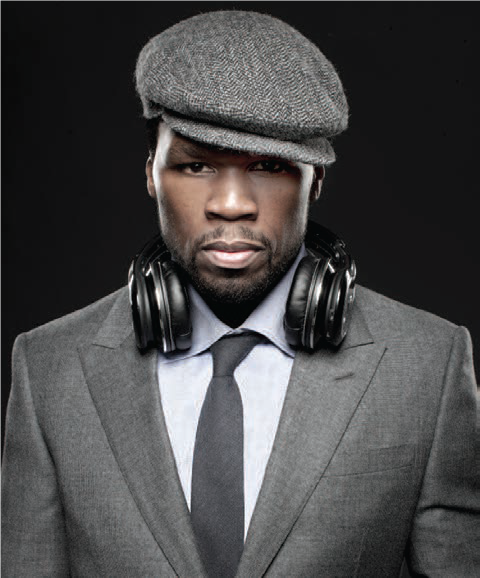 EDGE: Why is diversifying into multiple forms of entertainment so important for you?
EDGE: Why is diversifying into multiple forms of entertainment so important for you? interested in what your legacy is. The people who resonate the strongest are those people who consistently helped others. In terms of what SK Shot does, traveling the last time in Africa it was unbelievable. The numbers are astronomical. You wouldn’t even believe that that many people die from not having something to eat—and meanwhile we choose what we’re gonna eat, and throw away what we’re not.
interested in what your legacy is. The people who resonate the strongest are those people who consistently helped others. In terms of what SK Shot does, traveling the last time in Africa it was unbelievable. The numbers are astronomical. You wouldn’t even believe that that many people die from not having something to eat—and meanwhile we choose what we’re gonna eat, and throw away what we’re not.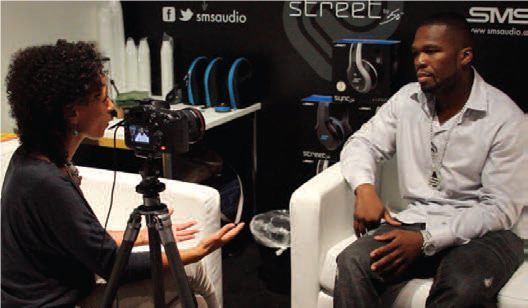 EDGE: Yet, there are tremendous stresses that come with succeeding in your industry—including pressures to stay on top, to make money to remain relevant.
EDGE: Yet, there are tremendous stresses that come with succeeding in your industry—including pressures to stay on top, to make money to remain relevant.

 Don’t Just Sit There! Thanks to a new study out of Australia, you can add one more thing to the list of long-term health no-no’s that includes smoking, drinking, lack of exercise and a high-fat diet: Sitting. Research by the Sax Institute of adults 45 and over found that those who sat for 11 or more hours a day had a 40% higher risk of dying within the next three years than people who sat less than four hours a day. The study adjusted for an array of other lifestyle and medical issues, but even for those who exercised regularly, the risk of death still rose with every additional hour spent in a chair.
Don’t Just Sit There! Thanks to a new study out of Australia, you can add one more thing to the list of long-term health no-no’s that includes smoking, drinking, lack of exercise and a high-fat diet: Sitting. Research by the Sax Institute of adults 45 and over found that those who sat for 11 or more hours a day had a 40% higher risk of dying within the next three years than people who sat less than four hours a day. The study adjusted for an array of other lifestyle and medical issues, but even for those who exercised regularly, the risk of death still rose with every additional hour spent in a chair. New Road Map for Families of Teen Diabetics For many parents, coping day-to-day with their teenagers is the most difficult, aggravating and exhausting phase of the child-rearing process. For parents of teens with Type 1 Diabetes, managing the disease and the young man or woman can prove next to impossible. The Eunice Kennedy Shriver National Institute of Child Health and Human Development recently provided a road map that families should find helpful. Their findings suggest that kids between ages 12 and 15 with Type 1 Diabetes benefitted dramatically from a two-year program (of three to four meetings a year) with parents and a health advisor to discuss shared responsibilities, goals and strategies for solving diabetes management problems that arose. Meeting with a health advisor during regular diabetes clinic visits, researchers reported, helped families better manage the changes that occur as children take on more responsibility for their day-to-day diabetes care.
New Road Map for Families of Teen Diabetics For many parents, coping day-to-day with their teenagers is the most difficult, aggravating and exhausting phase of the child-rearing process. For parents of teens with Type 1 Diabetes, managing the disease and the young man or woman can prove next to impossible. The Eunice Kennedy Shriver National Institute of Child Health and Human Development recently provided a road map that families should find helpful. Their findings suggest that kids between ages 12 and 15 with Type 1 Diabetes benefitted dramatically from a two-year program (of three to four meetings a year) with parents and a health advisor to discuss shared responsibilities, goals and strategies for solving diabetes management problems that arose. Meeting with a health advisor during regular diabetes clinic visits, researchers reported, helped families better manage the changes that occur as children take on more responsibility for their day-to-day diabetes care. Impact of the NYC Soda Ban The announcement of an impending ban in New York City on large, sugary drinks has prompted many people—both inside and outside of the medical profession—to chime in on what, if any, effects this will have on overall health. Obviously, gulping down quarts of soda, energy drinks and sweetened teas a week is not a smart idea. But will shaving a few ounces off this total make a difference? The consensus thus far is that it will—but only a small difference. Obesity is a complex disease, involving a lot of variables. That being said, if the “soda ban” pushes forward the national discussion about the dangers of consuming too much sugar—and overeating in general—it could have a significant impact. Lifestyle changes are often triggered by cultural changes; if the culture of junk-food consumption is altered through publicity and awareness that begins in New York, we may look back on this law as a true game-changer.
Impact of the NYC Soda Ban The announcement of an impending ban in New York City on large, sugary drinks has prompted many people—both inside and outside of the medical profession—to chime in on what, if any, effects this will have on overall health. Obviously, gulping down quarts of soda, energy drinks and sweetened teas a week is not a smart idea. But will shaving a few ounces off this total make a difference? The consensus thus far is that it will—but only a small difference. Obesity is a complex disease, involving a lot of variables. That being said, if the “soda ban” pushes forward the national discussion about the dangers of consuming too much sugar—and overeating in general—it could have a significant impact. Lifestyle changes are often triggered by cultural changes; if the culture of junk-food consumption is altered through publicity and awareness that begins in New York, we may look back on this law as a true game-changer. Genetic Connection to Blindness More than 15 million people around the world suffer from blindness brought on by Primary Angle Closure Glaucoma (PACG). The problem is especially pronounced among Asian populations, which account for about 12 million of these cases. A collaborative international research effort launched in Singapore recently identified three previously unknown genes associated with PACG. The medical community has long suspected the disease to be strongly hereditary, but these findings—published in the journal Nature Genetics—confirm the fact. This opens the door to possibilities of novel treatments, as well as the potential of early identification of people at risk for PACG. “These data are the first critical steps toward a better understanding of the underlying molecular events responsible for this blinding disease,” explains Dr. Janey Wiggs, Professor of Ophthalmology at Harvard Medical School.
Genetic Connection to Blindness More than 15 million people around the world suffer from blindness brought on by Primary Angle Closure Glaucoma (PACG). The problem is especially pronounced among Asian populations, which account for about 12 million of these cases. A collaborative international research effort launched in Singapore recently identified three previously unknown genes associated with PACG. The medical community has long suspected the disease to be strongly hereditary, but these findings—published in the journal Nature Genetics—confirm the fact. This opens the door to possibilities of novel treatments, as well as the potential of early identification of people at risk for PACG. “These data are the first critical steps toward a better understanding of the underlying molecular events responsible for this blinding disease,” explains Dr. Janey Wiggs, Professor of Ophthalmology at Harvard Medical School. New Study on Job Stress When Johnny Paycheck recorded the country hit “Take This Job and Shove It” back in the 1970s, it turns out he was way ahead of his time. Doctors in England recently completed a study that shows workers who feel over-pressured yet powerless run a risk of coronary disease that is 23% greater than those who are content in their work environment. The study covered around 200,000 workers in a wide range of occupations, from civil servants to factory workers. Subjects were asked about the type of work they did, the workload, deadlines and freedom to make decisions.
New Study on Job Stress When Johnny Paycheck recorded the country hit “Take This Job and Shove It” back in the 1970s, it turns out he was way ahead of his time. Doctors in England recently completed a study that shows workers who feel over-pressured yet powerless run a risk of coronary disease that is 23% greater than those who are content in their work environment. The study covered around 200,000 workers in a wide range of occupations, from civil servants to factory workers. Subjects were asked about the type of work they did, the workload, deadlines and freedom to make decisions.



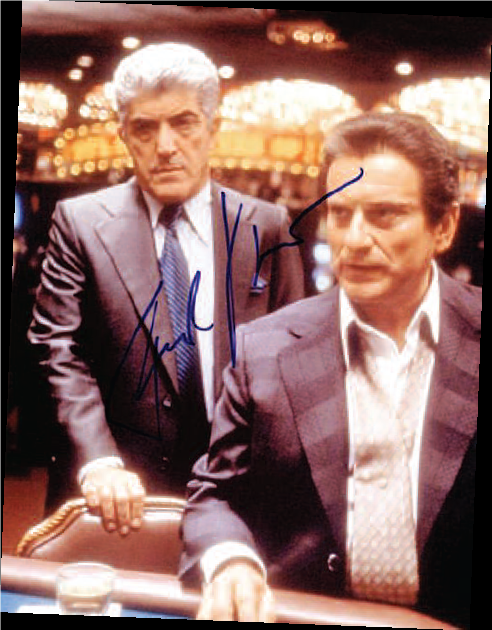
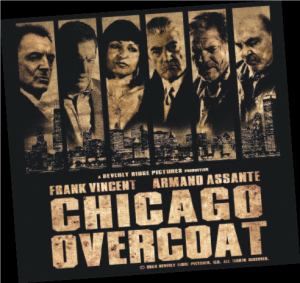 FV: I liked Lou Maranzano in Chicago Overcoat, which we shot in 2007 and was released in 2009. Lou had some interesting issues. Frank Marino in Casino was a good role for me, too, although it wasn’t a great speaking part. People think you have to speak a lot to have a big role but that’s not true. And of course, I enjoyed playing Phil Leotardo in The Sopranos because the writing was so brilliant. The level of discipline on that show was a real eye-opener as an actor. We shot each episode like a movie, on film, but in only 15 days. You could not deviate from the script. To change a single word—an uh or an and—you had to get permission.
FV: I liked Lou Maranzano in Chicago Overcoat, which we shot in 2007 and was released in 2009. Lou had some interesting issues. Frank Marino in Casino was a good role for me, too, although it wasn’t a great speaking part. People think you have to speak a lot to have a big role but that’s not true. And of course, I enjoyed playing Phil Leotardo in The Sopranos because the writing was so brilliant. The level of discipline on that show was a real eye-opener as an actor. We shot each episode like a movie, on film, but in only 15 days. You could not deviate from the script. To change a single word—an uh or an and—you had to get permission.







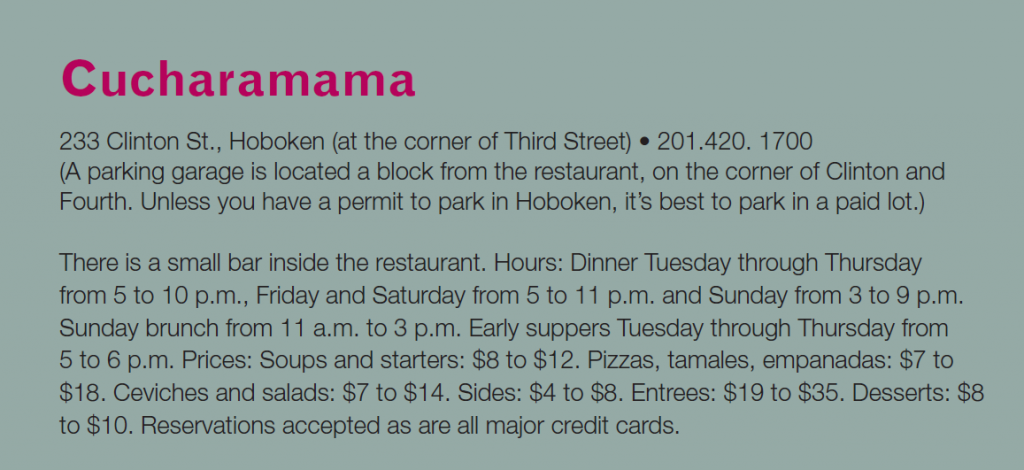
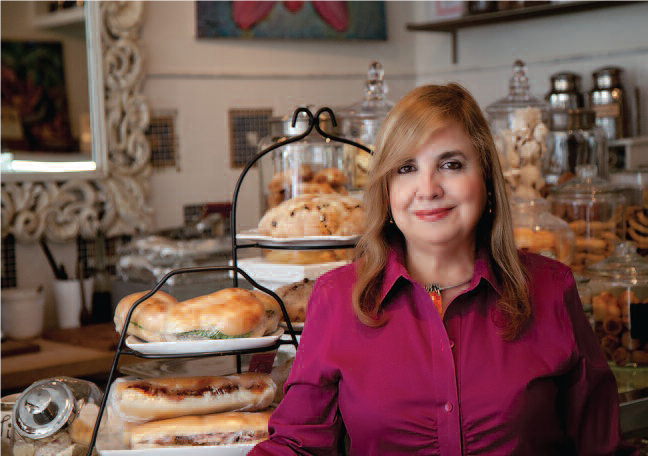

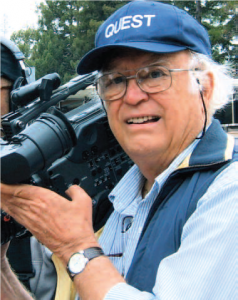
 ctions, a religious film company in Valley Forge, PA. “I told them I didn’t know anything about film,” says Jersey. “They hired me anyway, and I learned how to be an art director. I also realized how little I knew.” So he headed West to graduate film school at the University of Southern California. Graduating in 1956, he dipped his toe in the B-movie drama pool as Art Director of The Blob, Manhunt in the Jungle and 4D Man. But he was primed for documentaries. “There was something about wanting to connect to people in the real world and finding them much more interesting than working with actors with a script,” he says. “If you really care about people, they will know it, and they will open themselves up to you. And that’s what makes a good documentary.”
ctions, a religious film company in Valley Forge, PA. “I told them I didn’t know anything about film,” says Jersey. “They hired me anyway, and I learned how to be an art director. I also realized how little I knew.” So he headed West to graduate film school at the University of Southern California. Graduating in 1956, he dipped his toe in the B-movie drama pool as Art Director of The Blob, Manhunt in the Jungle and 4D Man. But he was primed for documentaries. “There was something about wanting to connect to people in the real world and finding them much more interesting than working with actors with a script,” he says. “If you really care about people, they will know it, and they will open themselves up to you. And that’s what makes a good documentary.”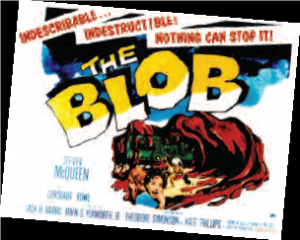 Bill Youngdahl to integrate a large, all white church in Omaha.
Bill Youngdahl to integrate a large, all white church in Omaha. producing and directing independent documentaries on such hot button issues as racism, criminal justice, gang violence, AIDS, Communism and integration. “For me, cinema vérité means letting the truth drive the story,” explains Jersey. “I don’t set out to prove anything— as many documentarians do. The difference between me and others is that I believe in being a participant observer. I explore options with my participants in the belief that our encounters will open them up to seeing more of themselves—not to see themselves as I see them. It’s a tricky business; but in my view, it’s an essential part of being a documentarian.”
producing and directing independent documentaries on such hot button issues as racism, criminal justice, gang violence, AIDS, Communism and integration. “For me, cinema vérité means letting the truth drive the story,” explains Jersey. “I don’t set out to prove anything— as many documentarians do. The difference between me and others is that I believe in being a participant observer. I explore options with my participants in the belief that our encounters will open them up to seeing more of themselves—not to see themselves as I see them. It’s a tricky business; but in my view, it’s an essential part of being a documentarian.”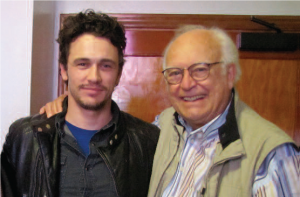 to debuting on PBS as part of the American Masters series. It should come as no surprise that Bill Jersey—father of five and grandfather of five—has no intention of winding down. “On the contrary, I’m winding up!” he says with relish, as he now juggles two careers instead of one.
to debuting on PBS as part of the American Masters series. It should come as no surprise that Bill Jersey—father of five and grandfather of five—has no intention of winding down. “On the contrary, I’m winding up!” he says with relish, as he now juggles two careers instead of one. out in the country where the light is changing. If you’re painting a river, you’re painting something in motion. The light does not sit there for you. That lovely shadow from the rooftop that you love will be gone in 15 minutes. It’s a very alive process.”
out in the country where the light is changing. If you’re painting a river, you’re painting something in motion. The light does not sit there for you. That lovely shadow from the rooftop that you love will be gone in 15 minutes. It’s a very alive process.”






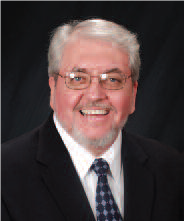 Editor’s Note: Jim Dunleavy is the Director of Physical Therapy and Rehabilitation for Trinitas Regional Medical Center.
Editor’s Note: Jim Dunleavy is the Director of Physical Therapy and Rehabilitation for Trinitas Regional Medical Center.